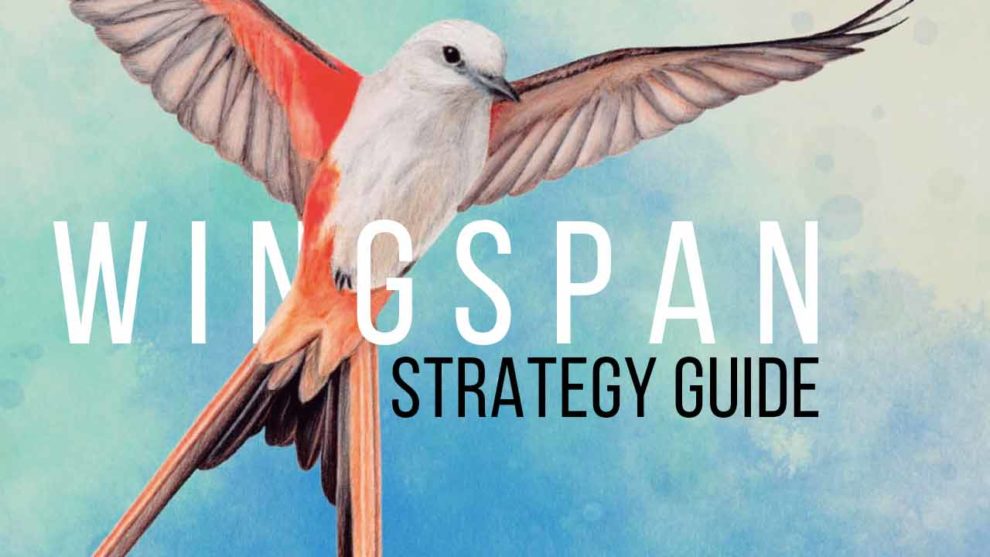In 2019, Wingspan was released to much fanfare and celebration. You’d think that I, being a responsible board game reviewer, would have rushed out to give it the old college try so that I could come back and share its wonder with the rest of the world. But that didn’t happen. As it was, it took me two full years to get it to the table. Or, if you want to be more precise, it took two years to get me to the table with it.
One Saturday afternoon in February of 2021, someone pulled it out of their game bag and I decided it was time to finally give it a try. An hour and a half later, the game was over. My first efforts were pretty abysmal, but I could see the potential. I really wanted to give it another shot, to do even better. I was hooked.
Now that I own Wingspan and have played it quite a bit, I have some tips to share. I’m not claiming to be a Wingspan world champion, but I can hold my own. The hope is that, after reading this, you can claim the same. Bear in mind, these tips assume you’ve got some idea of how to play the game. If you need a quick refresher, then I’ll direct you to Logan‘s excellent review of Wingspan, or Tom’s if you’re playing Wingspan digitally.
So, without further ado, I present to you our Top 6 Strategies For Flying High in Wingspan.
Give Yourself a Big Hand
The more cards you’re holding in your hand, the more options you have available to you. This is a tenet of many card-heavy tabletop games.
In Wingspan, it’s especially important. Birds played from your hand are the components of your engine, but they’re often used as payment for firing off the effects of said engine. And there are times when you’ll find yourself with a large supply of food just waiting to be used. The more cards you have in hand, the greater the chance you’ll have to utilize it when those times come around.
If you’re ever at a loss for what to do first in a game of Wingspan, focusing on a card drawing engine isn’t a bad first step. Look for birds with low food costs that will allow you to quickly extend your bottom row. Also, keep an eye out for birds that will help you turn your cards into even more cards, turn your cards into points, or (ideally) a combination of the two. If you find birds like these, definitely consider plugging them into your card drawing engine.
For example, the Franklin’s Gull will allow you to discard an egg to draw two cards. If this bird is placed at the end of a line of birds that allow you to tuck cards, then you’ve got a hefty points scoring engine on top of your card drawing one.
Let’s pretend you begin a turn with zero cards in hand. If all of your bottom row spots are filled, then you’ll be drawing four cards by default, followed by another two from Franklin’s Gull (after giving up an egg). Then, you’ll be tucking cards behind the remaining four birds. At the end of that action, you’ll have banked yourself four points (remember, tucked cards = points) and netted two cards. Run that engine again, and you’ll come out with a total of eight points banked and four cards in hand, enough cards to do pretty much anything you want.
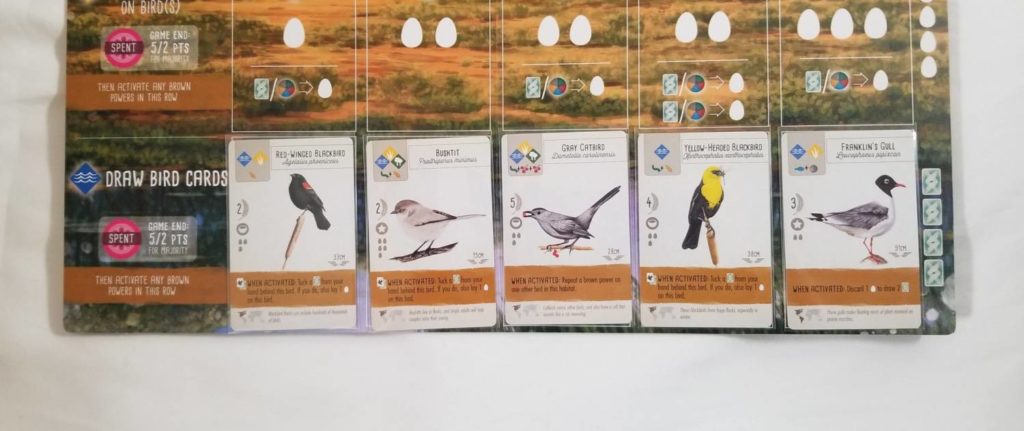
And this engine is even more accelerated if one or more of those other birds is like the Ring-Billed Gull which allows you to draw a card after tucking one from your hand. You could potentially gain four points and still wind up with six cards in hand after a single draw action. That’s pretty powerful.
Or, if you see a really good bird for a card-drawing engine, but can’t afford it, it may be worth taking it into hand just to deny it to your opponents. In Wingspan, it’s just as important to keep an eye on what other people are doing as it is to consider your own situation.
Putting Things Where They Don’t Belong
In Wingspan, each of the three rows specializes in different things: The top row gets you food; the middle row lets you disperse eggs; the bottom row, as we discussed, allows you to draw cards. But these rows don’t have to remain pigeonholed into their roles.
Some birds are able to live in one habitat while providing the benefits of another whenever they are activated. You’ll want to keep your eyes out for these birds and use them to your advantage. For example, being able to draw cards in addition to laying eggs (or vice versa) makes your engine more versatile and robust.
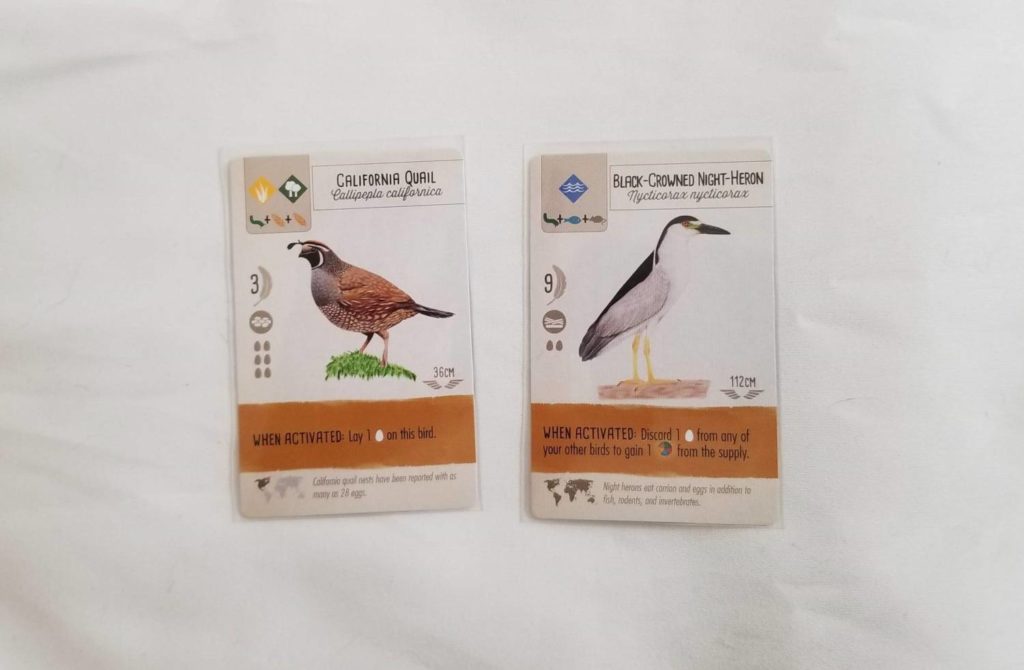
Consider Franklin’s Gull again. I talked about its ability earlier, but I didn’t mention that it can also reside in the middle, egg drawing, row. With Franklin’s Gull in the middle row, not only does your egg drawing action provide you with eggs, but you’re able to convert one of those eggs into cards. Or there’s a bird like the Black-Crowned Night-Heron that resides in the third row, but allows you to discard an egg to gain a food of your choice. Or there’s the California Quail that is able to reside in both the top and middle rows. When activated, it allows you to lay an egg.
These are just a few examples of the types of birds you should keep an eye out for: birds that defy the rules. Rebel birds that do what they shouldn’t where they shouldn’t do it. Adding these to your lineup will make your actions more efficient and make you more powerful.
Playing the (Super) Market
Another aspect of Wingspan that you can take advantage of to improve your game (and potentially slow down someone else’s) is the Bird Feeder. Learning when to strike, and when not to, is an important aspect of doing well.
Depending on the strength of the action you’ve taken in the top row, you are allowed to take a specific number of food tokens from the supply, determined by the faces on the available dice in the Bird Feeder. Any die that you claim is removed from the Feeder, and you remove them one at a time. If you could take a die and every die in the Bird Feeder has the same face, or if there is only a single die left, then you can opt to re-roll all the dice. Remember that and use it tactfully.
For instance, if it’s your turn and every die in the Bird Feeder is exactly the same, then consider taking the top row action to gain some food. This also holds true for cases where multiple dice are leftover, only two types of die faces are showing, and the removal of a single die would cause the remaining dice to show the same face. This will allow you to re-roll the dice, gaining you first pick of the new litter while denying this advantage to the next person in line. Now that you’ve taken the top shelf spirits, they’re left with the boxed wine.
This knowledge is also essential for knowing when not to take the food action, even if you’re currently out of food. If taking food from the Bird Feeder would leave only one die or leave all the remaining die faces matching each other, don’t take it. Consider doing something else instead, like laying eggs. Taking the food would hand the next person a golden opportunity. Pass that tough decision on to them. If they opt not to take the food either, then they’ll be in the same boat you’re in trying to overcome a scarcity of food without triggering a Bird Feeder reset. If you’re going to suffer, why not make them suffer, too? And, if one person’s going to be handing another a golden opportunity, wouldn’t you rather be the beneficiary of it instead of someone else?
Of Worms and Wheat
In each copy of Wingspan, you’ll find five dice. Five of the dice’s faces feature different symbols: (in the game’s vernacular) invertebrate, seed, fish, fruit, and rodent—or as I think of them: worms, wheat, fish, berries, and rats. The sixth face features an icon that allows you to choose either worms or wheat. Collectively, worms and wheat make up one half of the faces on each die. That means the probability of any single die rolling up a worm, a wheat, or an either/or is 33% (2:6). That is much better than the probability of the die rolling up a fish, a berry, or a rat—around 17% (1:6).
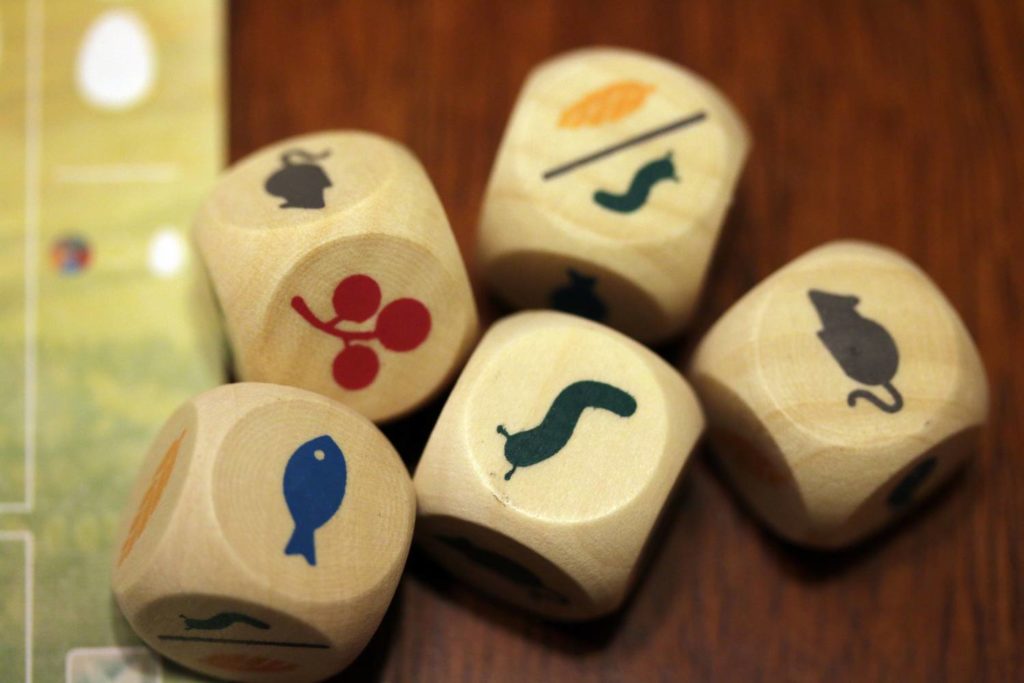
With that in mind, here’s my next tip: During the beginning stages of the game, focus on filling your hand with birds that a) Don’t cost a lot of food to put into play and b) Can be played using only worms, only wheat, or some mixture of the two. It’s a good bet you’ll be able to get them into play quickly.
Goals As Guideposts
Despite the seeming simplicity of Wingspan’s four actions—take food; lay eggs; draw cards; play a card from your hand—none of them are as easy as they sound. Each separate action forces you to make tough choices.
Food: Which food do you take? Do you take food you need or take food to deny it to your opponents? Not to mention the food reset considerations which I discussed earlier.
Eggs: Where should you place these eggs? For instance, some birds’ abilities require eggs in specific locations. So deciding where to place the eggs might be important.
Cards: Do you draw from the face up line up or do you draw blindly from the top of the deck? Even if you’re only drawing a single card, this means you’ve got four viable options to choose from. Plus, you’ve got to consider how taking a face up card will cause it to get replaced with a new card. Is taking one of these worth freshening a stale line up that nobody’s interested in?
Birds: Which bird should you play from your hand? Do you have the food and eggs needed to put it into play? For that matter, where should you actually play the bird? Some birds can live in multiple environments, forcing you to choose between them when playing the bird. What’s the right choice?
With so many options and so many questions put before you, Wingspan can sometimes feel a bit directionless. At times like these, it helps to have something concrete to focus your efforts on. And that’s where the end-of-round goals and the goals on your bonus cards come in handy.
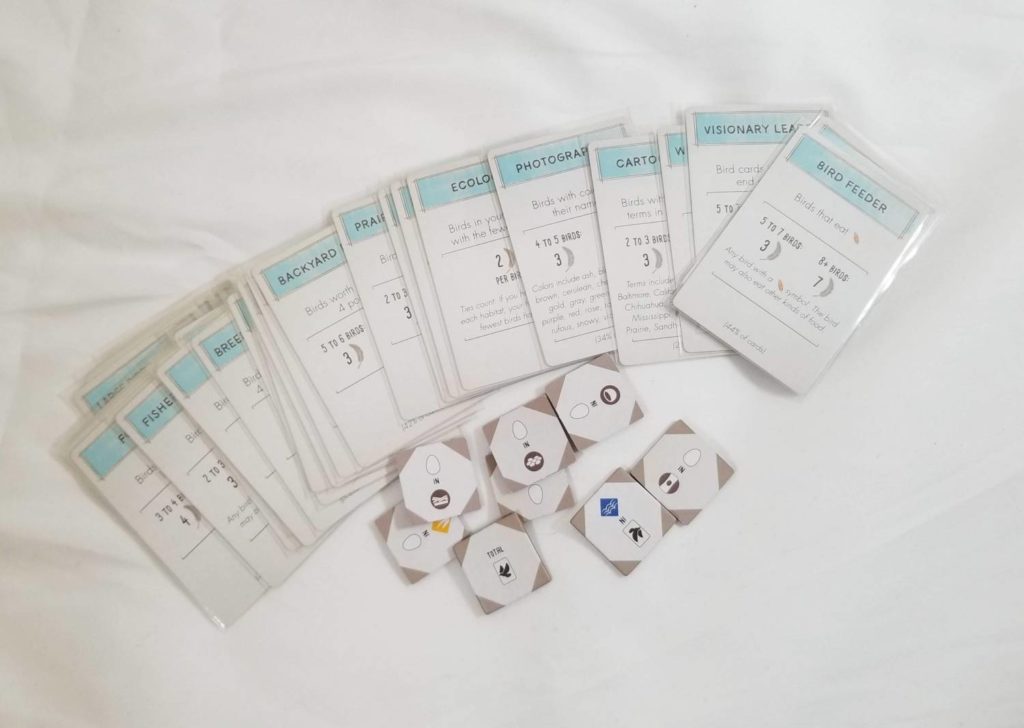
Out of all of the options spread out before you, which option(s) will best serve your future goals? Will one of the options serve multiple goals? If so, that’s your best option. Always focus on the goal that could potentially earn you the most points. For instance, if you’ve got a choice between placing a bird that will score you five points if you’re the person having the most of a certain type of bird at the end of the round versus a bird that could be used for your bonus card at the end of the game, which has the potential to score seven points, then go with the second option.
Exercise Self Bird Control
Wingspan is a game about birds. You’re going to want to play a lot of them. Getting birds into play should be your main focus. But not at the cost of synergy.
Remember: Wingspan is an engine builder. Each bird that you add is an essential part of improving that engine. The actions start off pretty weak—gain one food; lay one egg; draw a single card—but, as you build up each of those rows, the actions become stronger.
So, try to find birds that are synergistic and feed into each other. The examples I laid out in the ‘Putting Things Where They Don’t Belong’ section are good examples. Each bird placed feeds into the next bird’s ability. This synergy not only makes your engine more efficient, but it also makes for more satisfying turns (and consequently, a more satisfying game experience overall).
During your first few games, you may find yourself tempted to play birds from your hand just to play them. I get it. It’s exciting to watch your tableau fill up with cards. But that’s a waste of effort if that tableau isn’t helping you score points.
So, when thinking about the bird you’re about to play, consider the following questions: Is it worth a lot of points? Does it work well with other birds? Does it expand my ability to gain resources?
Unless it’s worth a ton of points on its own, don’t play it if it doesn’t create synergy or a more dynamic future turn (adding a new brown ability to a row, for instance). Without the ability to ‘overbuild’ birds (placing a new bird on top of an old one) or dismiss birds from your tableau, there is no way to erase your mistakes. Once you’ve placed a useless bird into one of your rows, you’re stuck with it.
This tip can be ignored during the last round of the game. That last round is all about eking out as many points as you can using the time left to you and the resources you have left in hand. If playing a bird from your hand would gain you more points than some other option, then by all means, play it.
Hopefully, these tips will not only help you improve your game, but they’ll help you win more often as well. If there are tips you would have recommended, or if there were any we recommended that you disagree with, we’d like to hear your thoughts! Let us know in the comments!


